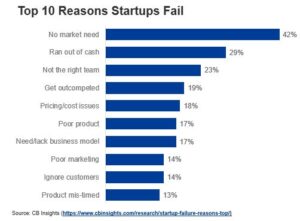Data Commercialization Isn’t Easy — And Many Initiatives Will Fail
The hype around big data got several things right, one being that data volumes are big and growing quickly. Digital transformation — as well as the growing adoption of IoT and the ubiquity of the device (AKA, “mobile phone”) that we all carry with us — has accelerated the growth of data. Having successfully put that data to use within their own operations, many companies now recognize that others can benefit from their data assets, too. Data commercialization has become increasingly common, and the supply of data products and services will continue to grow.
- Almost half of companies currently sell their data. Today, 47% of organizations report that they share or sell their data for revenue. When asked how they commercialize, 54% report exposing an API to the data for systematic or real-time access, while 38% report selling an application that enables users to see trends and insights in the data.
- New data brokers and marketplaces facilitate data commercialization. New channels to market help aspiring data commercializers. Alternative data brokers such as Quandl and Eagle Alpha identify new sources of data, which are often firms in fintech or eCommerce with transaction data that provides investors insights into future market movements. Nascent data marketplaces — Dawex, DataStreamX, dmi.io — pitch an easy way to get data to market, with click-through categorization and licensing models.
But Not All Data Commercializers Will Succeed

Building a data product or service really isn’t different from any other product launch. It’s not just an exercise of “let’s sell our data” or “if we build it, they will come.” In the startup world, the No. 1 reason for failure is “no market need” (see above figure): Excited innovators have built a product or service that no one is willing to buy. Maybe they are ahead of their time and the market isn’t ready, or maybe they haven’t paid attention to the needs of their target audience. Maybe they figure it out and pivot, or maybe they stick to it and struggle to price it (because no one really wants it), run out of cash (because they keep trying), or get outcompeted (because someone else figured out what it was people wanted).
Forrester predicts that many companies selling raw data will fail. And many self-service data marketplaces — those that think that if they build it, buyers and sellers will come — will struggle and eventually fail or pivot. Several marketplaces have already begun to sell their software as a private data catalog.
SEE THE REPORT: Predictions 2019: Business Insights
An Outside-In Approach To Commercialization Stands A Better Chance
It’s like a startup. Companies looking to commercialize their data must adopt a true product development process to identify commercially viable offerings. At Forrester, we advocate an outside-in approach in which those looking to sell their data — or the insights from it — work directly with potential customers from their target market to design and build the products.
- Identify a target customer and explore potential use cases. Often, it’s an existing customer who can benefit from the insights derived from the data. Several of the panelists in the deep dive on data commercialization at Forrester’s upcoming Data Strategy & Insights 2018 Forum will talk about their experience building insights services offered to existing customers.
- Estimate revenues and costs and risks and concerns. The best approach to commercializing data is to test the waters and assess the outcomes. Some companies have taken a use case that has delivered value internally and offered similar insights to external customers. In this case, the potential costs and values can be estimated from the internal use. Others have conducted pilots or proofs of concept to get those initial estimates.
- Demonstrate value quickly and design incrementally. The exercise is not a one-and-done but an ongoing process. Iterate to identify which data, market, and use cases are most commercially viable.
SEE THE REPORT: Data Commercialization: A CIO’s Guide To Taking Data To Market